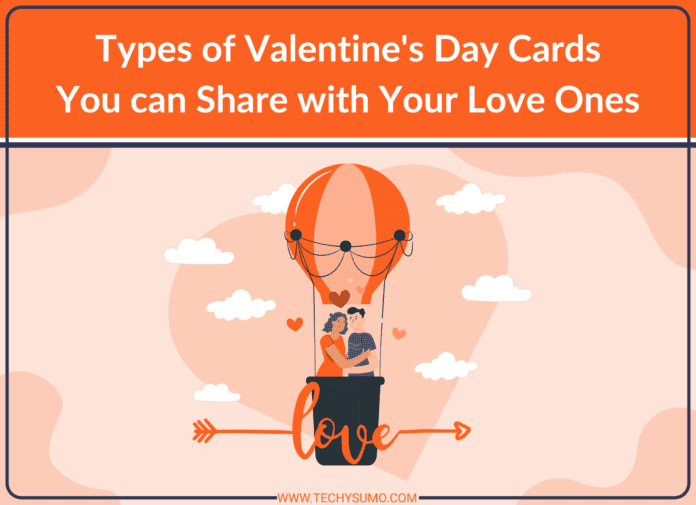There are several types of Valentine’s Day cards, including:
- Traditional Valentine’s Day cards, feature hearts, Cupid, and romantic messages.
- Funny Valentine’s Day cards, which feature humorous messages or jokes.
- Romantic Valentine’s Day cards, which express love and affection through heartfelt messages and poetry.
- Personalized Valentine’s Day cards, which include a custom message or photograph.
- E-cards are electronic versions of traditional cards that can be sent via email or social media.
- Pop-up Valentine’s Day cards, feature three-dimensional designs that “pop up” when the card is opened.
- Photo Valentine’s Day cards, which feature a personal photograph of the sender and/or the recipient.
- Handmade Valentine’s Day cards are created by the sender using materials such as paper, paint, and fabric.
These are just a few examples, and there are many other types of Valentine’s Day cards available as well.
History of Valentine’s Day
Valentine’s Day has its origins in ancient Rome, where a festival called Lupercalia was held in mid-February to celebrate fertility and the coming of spring. The festival included the sacrifice of goats and dogs, as well as the pairing off of women with men in a lottery-type process.
Valentine’s Day as it is celebrated today has its roots in the Christian tradition. One theory is that it was created to Christianize the pagan festival of Lupercalia. Another theory is that it was created to honor Saint Valentine, a Christian martyr who was executed on February 14th in the 3rd century AD.
Valentine’s Day as a holiday for romantic love began to take shape in the High Middle Ages, around the 14th and 15th centuries. The first written Valentine’s message is believed to have been sent by Charles, Duke of Orleans, to his wife while he was imprisoned in the Tower of London.
Valentine’s Day became more popular in the 18th and 19th centuries, with the advent of the printing press and the rise of literacy. During this time, Valentine’s Day cards and gifts began to be mass-produced and exchanged between sweethearts. Today Valentine’s Day is celebrated in many countries around the world and is a popular day to express love to friends, family, and loved ones.
Importance of valentine’s day card
Valentine’s Day cards are an important way of expressing love and affection to one’s partner, friends, or family. They provide a tangible, physical reminder of the feelings shared between two people and can be kept as a keepsake for years to come.
Valentine’s Day cards can also be a creative and personal way of expressing one’s feelings, as they can be customized with messages, artwork, and photographs. They can also be used to show appreciation and gratitude to those who are important in one’s life, such as friends and family members.
Valentine’s Day cards can also be a way of expressing love to those who may not be present, such as long-distance partners, loved ones who have passed away, or even to oneself.
Furthermore, Valentine’s day card is not only a physical representation of love but it also a symbol of tradition that has been passed down through generations and celebrated for centuries. So, it is not only an expression of love but also a representation of history and culture.
Whom to share Valentine’s Day Card
Valentine’s Day cards can be shared with anyone you have feelings of love and affection towards, including:
- Your romantic partner: Valentine’s Day is traditionally associated with romantic love, and many people use it as an opportunity to express their love and affection to their significant other through cards and gifts.
- Family members: Valentine’s Day is also a great opportunity to show love and appreciation to your parents, siblings, grandparents, and other family members.
- Friends: Valentine’s Day is not just for romantic love, it’s also a great opportunity to show appreciation and gratitude to your closest friends.
- Children: Valentine’s Day is also an opportunity to show love and appreciation to your children, sending a valentine’s day card for your daughter or making a homemade one.
- Yourself: Valentine’s Day can also be an opportunity to show love and appreciation to yourself, send yourself a card or a gift, or treat yourself to something nice.
In conclusion, Valentine’s Day cards can be shared with anyone you care about, regardless of their relationship with you. It’s all about showing love and appreciation.


























